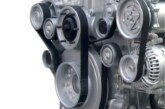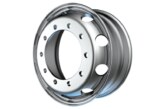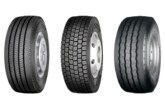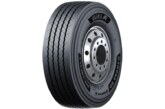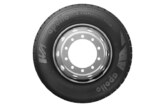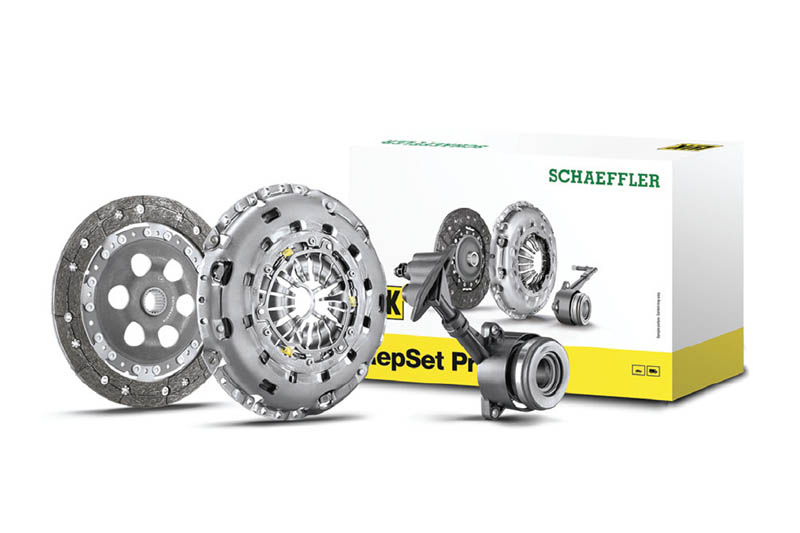
Engines are changing, so the clutch and transmission system is being adapted too. Alistair Mason, Technical Manager for Schaeffler, gives his advice for carrying out clutch work.
Overview
- Plan the job – order the parts and check for any service information or technical bulletins prior to starting – and, to save time, the REPXPERT fitting instructions can also be attached to the job card as the torque settings will be readily available
- Look over the special tools required to ensure the job can be completed successfully
- Schaeffler now offers a RepSet DMF, a Dual Mass Flywheel, and clutch kit in one box, this also contains all bolts & accessories required for the repair
- By following the REPXPERT instructions, the gearbox and clutch removal is generally straightforward
- Mark positions of drive flanges and prop shafts, so as not to incur balance issues
- Always pay close attention for wear to pivot points, bearing guide tubes, release mechanisms, and bushes, and replace if required
- Always rectify any engine or transmission leaks that could contaminate the new clutch assembly
- When installing the gearbox on commercial vehicles, spend a little extra time aligning the gearbox on the transmission jack, as these gearboxes can be heavy and damage the clutch plate if not aligned correctly
- Always replace the clutch fluid, as contaminated clutch fluid can easily deform a new seal in the concentric slave cylinder, causing it to fail prematurely.
Some workshops avoid clutch work, preferring instead to send it to a‘specialist’; however, by following a few simple precautions, every workshop can avoid turning work down and start turning a profit. Supplying replacement parts is becoming increasingly difficult, especially genuine parts from original equipment (OE) suppliers. Unfortunately, a vehicle registration look-up may not always be entirely accurate, so finding some additional basic vehicle details – preferably directly from the vehicle – will reduce the risk of being supplied an incorrect part.
Having certain important information to hand can really help; such as the correct VAG engine code, knowing where reverse is located on GM applications (to identify the correct CSC), or finding out if a VW has a start/stop system, which is essential in identifying the right DMF.
Follow the free fitting instructions
Before the parts are delivered, check if there any specific and accurate fitting instructions available, especially if you are not familiar with the vehicle. Schaeffler’s REPXPERT online workshop portal is a perfect place to start, as clutch fitting instructions are completely free for members to access, and can be saved, printed, and attached to the job card.
Check the application listings for the kit you are fitting to see how many components are shown and check against the instructions to see if all the parts required have been ordered. LuK RepSets are renowned for being ‘complete repair solutions’, which reduces the risk of missing essential parts.
Technicians can also access REPXPERT direct from their mobile device, with extra functionality such as a barcode scanner that will take you straight to all the technical documents for the parts you have ordered, simply by scanning the LuK label. The popular DMF CheckPoint app is now built in to REPXPERT, so all the critical tolerances and installation specifications and are quickly and easily available in just a few clicks.
Equipment
There is not a great deal of specialized equipment required, but a few essentials will make the job easier; a two-post ramp and a working transmission jack – or two if working on larger vehicles (like an L200) – preferably with a tilting head for a troublefree refit. A universal alignment tool will also make gearbox installation easier and prevent damage to the new clutch.
Whilst it is essential to use a special tool to fit self-adjusting clutches, Schaeffler’s SAC tool has added value, as it can be used during any clutch installation to help ensure correct fitment, whilst also including special alignment tools to suit multiple applications.
A DMF can be checked for wear prior to removal by using an LuK DMF tool in conjunction with the DMF CheckPoint function in the REPXPERT app. If the DMF does need replacing, then the app also informs the technician if new bolts are required and what torque values to use.
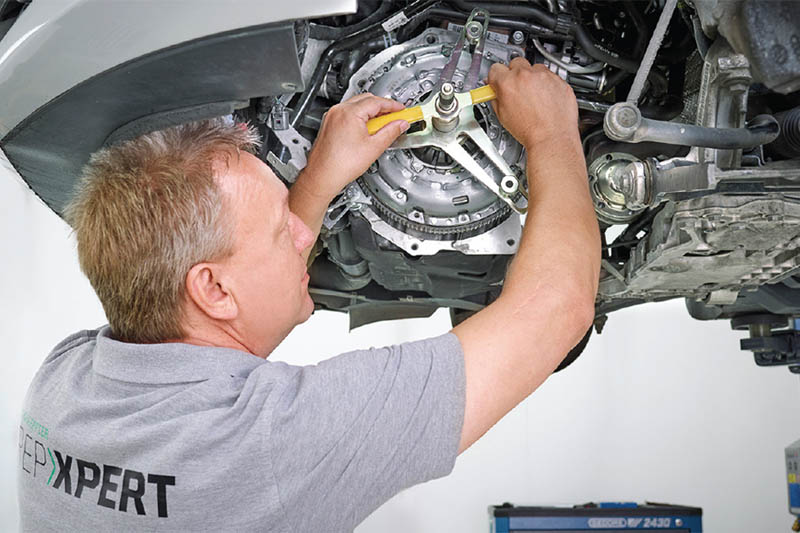
The right parts
Once the parts have arrived and the gearbox has been removed, it’s always worth conducting some basic comparisons:
Splines – Sliding the drive plate back and forth to distribute a small amount of grease is a good check that the splines are correct, not forgetting to wipe off any excess grease afterwards.
Drive plate orientation – On many LuK clutches, ‘Getriebe Seite’ may be seen (which is German for ‘Gearbox Side’), whilst ‘Schwungrad’ is translated to ‘Flywheel’. If something different is identified – or no direction is given – technicians should carefully check the installation instructions to avoid problems caused by fitting the drive plate incorrectly.
DMFs – It is always worth checking the reluctor/sensor ring on the back of a DMF. Even if it’s from a different manufacturer, it should still have the same number of teeth and they should be undamaged. OE suppliers, such as Schaeffler, will replace transit damaged goods, but only if it has been spotted before fitment.
Concentric Slave Cylinders (CSC) –A modern plastic CSC can obviously look different, especially if the original was metal, but it should have the same number of fixings and the pipe position should be similar. It may sound simple, but technicians should always read the instruction sheet inside the CSC box. It may contain critical information, such as how to find and discard a redundant pipe seal (on Vauxhall applications), and some Ford instructions explain that the Oring should be replaced by sealant.
Check the rest – Worn or seized cross shaft bushes need to be rectified; bent or damaged forks need to be replaced; ball pivots checked; repair leaking gearbox seals and, finally, reset or replace all self-adjusting cables.
The finishing touches
Technicians should never grease plastic release bearings. On most pull-type clutches, technicians should fit the release bearing to the gearbox, and locate it to the clutch cover after fitting the gearbox. They need to be extremely careful when inserting the gearbox; swinging up and down on the back of a gearbox, to fit it to a poorly Aligned clutch, will most probably cause Damage and judder.

